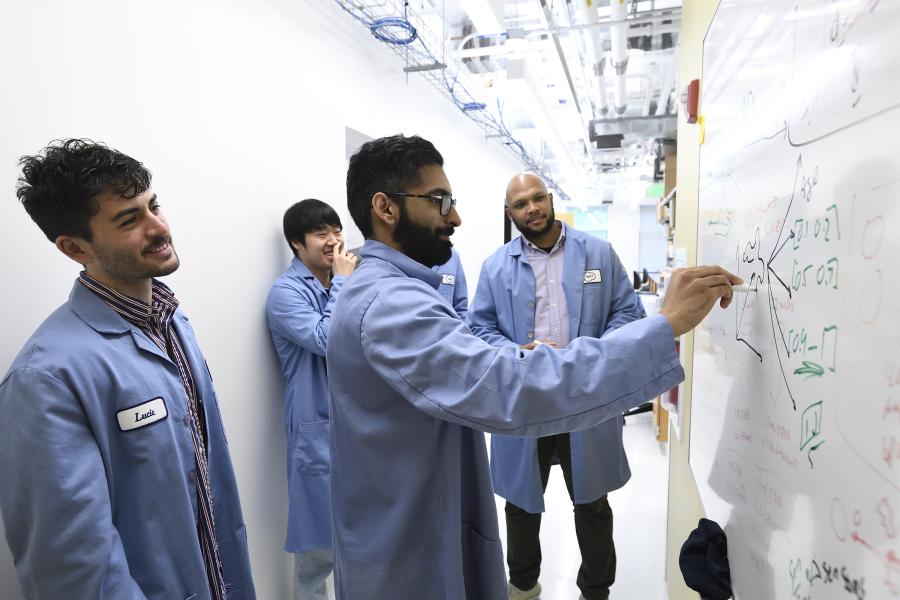Johns Hopkins University once again surpassed all U.S. universities in the amount of federal support it received for research and development spending in fiscal year 2022, according to the annual National Science Foundation report on higher education R&D.
In its 44th consecutive year in the top spot, Johns Hopkins directed a record-breaking $3.4 billion into an array of projects across the enterprise.
"Johns Hopkins University exemplifies an unwavering commitment to advancing knowledge and innovation," says Denis Wirtz, vice provost for research at Johns Hopkins, professor of chemical and biomolecular engineering, and a core researcher at JHU's Institute for NanoBioTechnology. "We applaud the collective dedication of our researchers who, fueled largely by federal support, continue to make groundbreaking strides in diverse fields, from animal cognition to cancer treatment innovations and artificial intelligence. This accomplishment speaks to the enduring impact of Johns Hopkins in shaping the forefront of research and underscores our vital role in driving progress and discovery for the betterment of society."
Johns Hopkins' closest peers in R&D spending for 2022 are the University of California, San Francisco with $1.8 billion, followed by the University of Michigan with $1.79 billion. JHU's FY2021 R&D spending total was $3.181 billion.
The Higher Education Research and Development Survey is the primary source of information on R&D expenditures within higher education institutions in the United States. In fiscal year 2022, the most recent year for which nationwide data is available, total R&D spending for the approximately 900 institutions covered by the annual survey reached $97.8 billion, an increase of $8 billion over the prior fiscal year.
R&D expenditures funded by federal sources accounted for $4.9 billion of the total increase. Universities' internally funded R&D expenditures were $2.1 billion greater than in FY 2021, while university R&D funded by businesses increased by $587 million—the largest annual increases on record in current dollars.
The university's federal funding sources include not only the NIH and NSF, but also the departments of Energy and Defense, the Centers for Disease Control and Prevention, NASA, and others.
Johns Hopkins researchers' success in winning federal funding—which accounted for close to 87% of its 2022 R&D expenditure—enables them to pursue projects in an array of fields, from human genetics to artificial intelligence.
Over the past year, for instance, scientists at the university have reported that apes remember friends they haven't seen in decades, provided the most-detailed analysis of embryo fate following human in vitro fertilization, developed a promising new approach using minuscule tubes to deliver cancer-fighting drugs directly to breast cancer tumors while preserving healthy cells, decoded a missing piece of the human genome, and used AI to fight "fake facts" by grounding a large language model's answers in reality.
Along with federal funding, universities receive institutional backing and funding from state and local government, nonprofits, and businesses. Research at Johns Hopkins is also funded by income from licenses of past and present business enterprises. The university earned more than $32 million in licensing revenue in 2022 followed by more than $44 million in 2023. In 2022, the university attainted 132 new U.S. patents, and it added 121 new patents in 2023. The university helped launch 14 companies in 2022 and 13 more in 2023.
Johns Hopkins first crossed the $2 billion spending threshold in fiscal 2010 and remains the only university to have done so. Since 1979, the NSF's inclusion of the Applied Physics Laboratory's spending in its accounting of Johns Hopkins expenditures has solidified the university's annual position at the top of the NSF rankings. In fiscal year 2022, APL spent $2.056 billion on R&D.
Posted in University News
Tagged nsf, research funding








